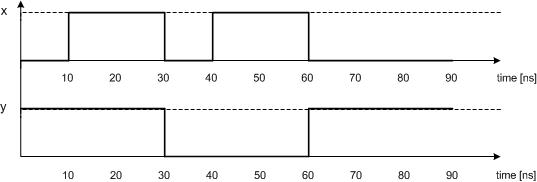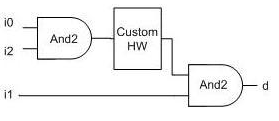EECS 31L/CSE 31L: Lab 1
Digital Design Lecture Videos for Lab 1
- Logic Gates (pdf): English | Mandarin | Spanish
- Logic Components (pdf): English | Mandarin | Spanish
- Hierarchical Components (pdf): English | Mandarin | Spanish
- Digital Design Idol: Boolean Algebra
Digital Design Example Videos for Lab 1
Sample Lab Handout
Lab 1 Handout
-
"; print ""; // special linking for lab 1 since main page is publicly accessible. remember to update the link for not logged in as well. if ($auth_object->isLoggedIn()) { if ($auth_object->allowedAccess($auth_object->EECS31L_ARRAY)) { print "View Lab 1 Handout"; } else if ($auth_object->allowedAccess($auth_object->EECS31L_STUDENT_ARRAY)) { print "View Lab 1 Handout"; } else { print "View Lab 1 Handout"; } print ""; } else { // you're not logged in, sorry... print "View Lab 1 Handout"; } ?>
Digital Design Refresher for Lab 1
Available on EECS 31/CSE 31 Course Page
- Boolean Algebra
- Boolean Simplification
- Logic Gates
- Technology Mapping
Lab 1 Quiz Sample Problems
Sample Problem 1
Question
The following VHDL code for gate level logic does not compile and simulate correctly with ModelSim as written below. In the table below, rewrite the minimum number of lines to make the entire code compile and simulate correctly.

Solution
Line # Code 10 end final_prob1; 13 process (k, p, s) Detailed Explanation
View Video Explanation for Problem 1
Sample Problem 2
Question
The following VHDL code for an AND function of two 2-bit vectors A and B does not compile and simulate correctly with ModelSim. In the table below, rewrite the minimum number of lines so that code correctly simulates.

Solution
Line # Code 11 F <= A AND B; or: 11 F <= (A(1) AND B(1)) & (A(0) AND B(0)); Detailed Explanation
View Video Explanation for Problem 2
Sample Problem 3
Question
Fix the given code for testing a DUT for 60 ns so it generates the test vectors from the time diagram in Figure 1.

Figure 1: Test Vector

Solution
Line # Code 16 WAIT FOR 10 ns; 18 WAIT FOR 20 ns; 24 WAIT; Detailed Explanation
View Video Explanation for Problem 3
Sample Problem 4
Question
Complete the port map of the given VHDL code so it correctly implements the following design:


Solution
Line # Code 18 And2_1: And2 PORT MAP (i0, i2, n1); 19 And2_2: And2 PORT MAP (n2, i1, d); 20 CustHW: CustomHW PORT MAP (n1, n2); Detailed Explanation